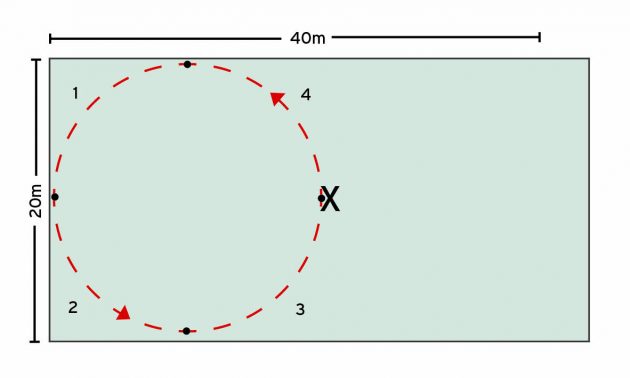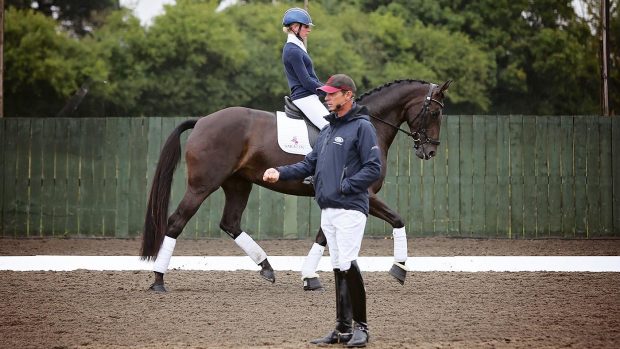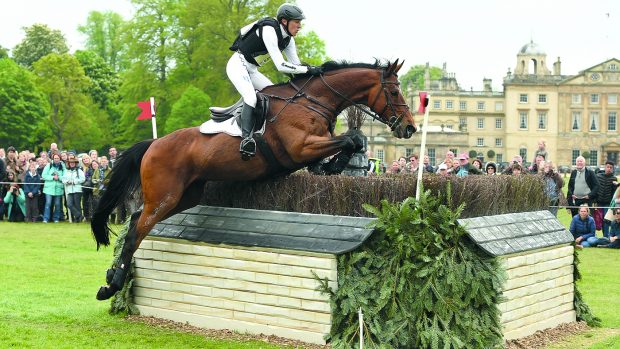Welcome to the first Horse & Hound eTraining elesson with grand prix dressage rider Keith Robertson. This week, Keith focuses on riding accurate circles, with a view to pushing up your percentages when riding prelim 1
This guide is broken into two sessions, giving you plenty to work on in the school this week. The first focuses entirely on circles, and the second gives further advice specific to riding British Dressage prelim 1. Once you’ve tried out Keith’s suggestions, let us know how you got on.
Session 1: Using markers to achieve well-shaped circles
In prelim 1, you ride a 20m circle on each rein right in front of the judge at C, so it’s important that you perfect these.
Tip one: Whenever you’re asked to ride a circle, remember to produce a circle, not a corner or series of corners — it seems obvious, but circles should always be round. Ensure you know where the markers are and where to position your circle between them. A 20m circle at C should touch X, but only touch the arena at three points including C – the judge wants to see that you’ve positioned your circle well.
Tip two: You also ride half 20m circles in prelim 1. When practicing these, aim to achieve a maximum of one or two strides of straightness over X — you’ll need to illustrate that you’re straight for this moment before changing the bend and beginning the next half circle.
Tip three: If you’re struggling with accuracy, break the movement down and ride it as four quarters, rather than attempting the circle as a whole. Put markers down and aim for the quarter marker each time.

Riding 20m circles in canter
Tip four: When practicing circles in canter, ensure you keep the rhythm, maintain a bold canter and think about keeping the horse straight when you come out of the circle and go large – it’s tempting to ride too much off the inside rein and end up with too much inside bend, especially with a greener horse.
Tip five: In canter, judges commonly see the horse’s quarters coming in on a circle and his weight going onto the outside shoulder. If you have a horse that’s quarters have a tendency to come in, he may need a little bit of outside rein to help stay straight. This will also help make a smoother transition to trot. Try using counter-canter in your training to help improve the evenness of the true canter.
Tip six: If your horse is stiff on one rein, you’ll often find it’s the one on which he looks straight in canter, while on the softer rein he may be too bent to the inside, even though you think the canter feels nicer. Make sure you work your horse evenly on both reins.
Let others know if you found this session useful by sharing your progress and pictures with the rest of our e-Community.
Session 2: Practise the whole test
It’s now time to practise riding the test, remembering what you learned in session one, but first, watch this week’s test riding video with Isobel Wessels.
If you can not see the video player above please click here to view
We will focus on other movements throughout the series that will also help improve your prelim 1 marks, but taking things one step at the time for now ensure that you are comfortable with the following given Keith and Isobel’s advice:
- Riding half circles — both 20m and 10m diameter
- Riding accurate 20m diameter circles
- Changing the rein in free walk and staying straight
Horse & Hound magazine, out every Thursday, is packed with all the latest news and reports, as well as interviews, specials, nostalgia, vet and training advice. Find out more about getting the magazine delivered to your door every week.




